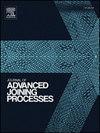Process parameter optimization and bonding mechanism in dissimilar S45C/A6061 joints via novel sacrificing-sheet linear friction welding
IF 4
Q2 MATERIALS SCIENCE, MULTIDISCIPLINARY
引用次数: 0
Abstract
Sacrificing-sheet linear friction welding (SSLFW) is a novel solid-state joining technique developed to address the challenges of dissimilar welding between S45C steel and A6061 aluminum alloy, which are difficult to join using conventional linear friction welding (LFW). In this method, a S45C center sheet is linearly oscillated while the two base materials, i.e., S45C and A6061, are pressed against it using a center-driven double-sided LFW machine. The center sheet acts as a sacrificial sheet, which is progressively expelled from the joint interface during welding owing to thermomechanical effect from each side, thereby enabling direct joining between the base materials. This study investigates the effects of key process parameters on mechanical properties and interfacial microstructure, and clarifies the bonding mechanism of SSLFW. Optimum welding conditions with 2 mm upset length, 300 MPa applied pressure toward A6061, 1 s preheat time, and 50 MPa preheat pressure produced sound, defect-free joints with a thin, continuous intermetallic compound (IMC) layer of approximately 100 nm. These conditions enabled simultaneous plastic deformation of both base materials through sacrificing role of center sheet and effective suppression of unbonded regions. The resulting as-welded joint achieved a peak tensile strength of ∼235.3 MPa, corresponding to a joint efficiency of ∼73 % with respect to the A6061 base metal. Post-weld artificial aging significantly exhibited hardness recovery on the A6061 side, enhancing the joint strength to ∼307 MPa and increasing joint efficiency to ∼96 %. These results demonstrate the high potential of SSLFW for sound dissimilar metal joining.
新型牺牲片线性摩擦焊接不同S45C/A6061接头的工艺参数优化及连接机理
牺牲片线性摩擦焊是为了解决传统线性摩擦焊难以连接的S45C钢与A6061铝合金异种焊接而发展起来的一种新型固态连接技术。该方法利用中心驱动的双面LFW机对S45C中心片材进行线性振荡,同时对S45C和A6061两种基材进行压制。中心片作为牺牲片,在焊接过程中,由于两侧的热机械效应,牺牲片逐渐从连接界面中排出,从而实现基材之间的直接连接。研究了关键工艺参数对SSLFW力学性能和界面微观组织的影响,阐明了SSLFW的结合机理。最佳焊接条件为镦距2mm, A6061施加压力300 MPa,预热时间1 s,预热压力50 MPa,可产生具有约100 nm薄的连续金属间化合物(IMC)层的良好无缺陷接头。在这些条件下,通过牺牲中心片的作用和有效抑制非粘合区域,使两种基材同时发生塑性变形。由此产生的焊接接头的峰值抗拉强度为~ 235.3 MPa,相对于A6061母材的接头效率为~ 73%。焊后人工时效显著恢复了A6061侧的硬度,使接头强度提高到~ 307 MPa,接头效率提高到~ 96%。这些结果表明,SSLFW在声学异种金属连接方面具有很高的潜力。
本文章由计算机程序翻译,如有差异,请以英文原文为准。
求助全文
约1分钟内获得全文
求助全文

 求助内容:
求助内容: 应助结果提醒方式:
应助结果提醒方式:


